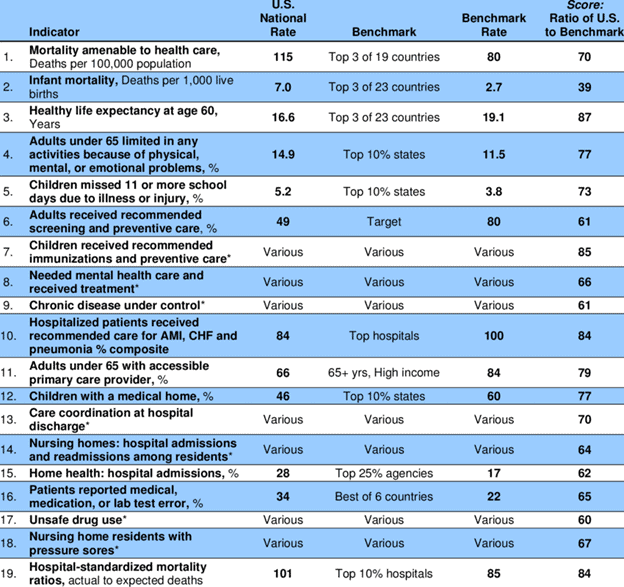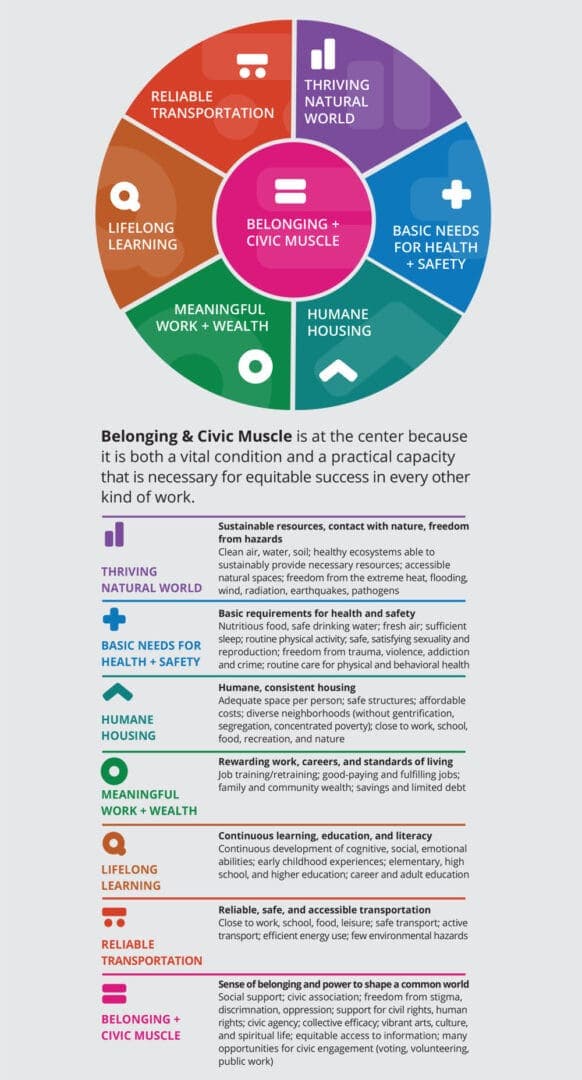Blip-Zip Executive Summary
Unleash the Transformative Power of Systems Thinking and Artificial Intelligence (AI) Competencies as part of your developmental journey! This 4-part series of articles ignites a journey for mid-career and senior leaders to revolutionize health and human services delivery and optimize population health outcomes. Discover how strategic systems thinking frameworks and AI can help you navigate complexity, foster collaboration, and drive innovation. Embrace a holistic approach to healthcare leadership and join the movement towards a healthier future!
Blip-Zip Takeaways
- Master interdependencies and interconnectedness: Begin learning to leverage systems thinking to understand how individual, community, organizational, and population health factors influence health outcomes.
- Harness AI’s power before it Harnesses You: Start embracing and integrating AI’s use to analyze vast datasets, identify trends, and predict health challenges to optimize resource allocation and design sustainable solutions.
- Lead with strategic foresight: Embrace strategic systems thinking and AI-driven competencies and approaches to navigating complexities, fostering collaboration, and propelling healthcare forward.
Keywords/Themes (#Hashtags)
#systemsthinking #AIinhealthcare #populationhealth #leadershipdevelopment #strategichealthleadership, #healthleadership #strategicthinking #artificialintelligence #populationhealthmanagement #healthsystemtransformation
Table of Contents
Introduction to 4 Ways to Improve Your Health Leadership With Systems Thinking and AI
This article ignites a transformative journey for mid-career and senior health leaders yearning to navigate the complexities of today’s health ecosystem. We embark on a four-part exploration of systems thinking principles and artificial intelligence (AI) – powerful tools for strategic health leaders to revolutionize healthcare delivery and optimize population health outcomes.
The Commonwealth Performance Scorecard exemplifies a systems thinking approach in action. It measures a state’s health system performance across multiple dimensions, including access to preventive care, healthcare quality, and health outcomes. By analyzing these interconnected factors, leaders can identify areas for improvement and develop targeted interventions.

Part I: Build a Systems Thinking Mindset: Level, Foundations, Frameworks
Part I establishes the cornerstone of our exploration – a foundational understanding of systems thinking. We delve into this paradigm’s origins and core tenets, contrasting it with the limitations of linear thinking. The concept of “levels of systems” in the health ecosystem, encompassing the micro (individual) to the macro (global), becomes a critical lens for examining health and human services systems. Levels in the “Health Ecosystem” include:
- Individual: A systems-thinking leader understands how individual factors directly impact health outcomes. Factors include access to healthy food, safe housing, education, social support, and mental health services. Leaders must consider how social determinants of health (SDOH) at this level influence individual well-being.
- Team: This level could encompass healthcare teams within clinics, hospitals, or other care settings. A systems thinking leader would analyze how team dynamics, communication, and collaboration influence patient care delivery and overall health outcomes.
- Organizational: Systems thinking at the managerial level requires analyzing the interconnectedness within healthcare organizations. Leaders must examine how care coordination between departments, such as primary care, specialists, and social services, impacts patient outcomes. By understanding these internal dynamics, leaders can identify areas for improvement and optimize care delivery.
- Community: Moving beyond the individual, we must consider the broader community context. Leaders should analyze the social determinants of health (SDOH) at the community level, including crime rates, educational opportunities, and environmental quality (air and water). These interconnected community factors significantly impact population health outcomes.
- System of Population Health: The highest level of analysis focuses on the entire population health system. Strategic leaders leverage systems thinking to address population health issues like chronic disease management and health disparities across different demographic groups. This level necessitates collaboration across all the mentioned levels to achieve optimal population health outcomes.
By understanding these interconnected levels within the health ecosystem, strategic health leaders can cultivate a holistic perspective and make informed decisions to improve the overall health and well-being of the communities they serve.
Part II: Theories, Methods, And Tools
Part II unpacks the essential theories, methods, and tools that empower leaders with a systems thinking perspective. It overviews concepts, methods, tools, and systems thinking methods with several illustrations and vignettes. Articles within this section might include:
- Unveiling the Power of Systems Thinking in Healthcare Leadership
- Demystifying Systems Thinking: Core Concepts and Applications in Health
- Beyond Linear Approaches: Levels of Analysis for Strategic Health Leaders
Illustrative case studies and practical exercises illuminate the application of systems thinking tools like causal loop diagrams and behavior over time graphs. With these tools, leaders can uncover the underlying dynamics influencing health system performance and identify potential leverage points for intervention.
Part III: Systems Thinking in Action: Applications for Strategic Leaders
Part II showcases the transformative power of systems thinking through compelling real-world applications, particularly within health and human services (HHS) system integration. We examine frameworks like the Institute for Healthcare Improvement’s (IHI) Quadruple Aim and the Centers for Disease Control and Prevention’s (CDC) Social Determinants of Health and demonstrate how they align with a systems thinking approach.
We explore how these frameworks empower strategic leaders to address complex challenges across diverse settings:

- Healthcare, Public Health, and Social Services Collaboration: Systems thinking can guide integrating public health initiatives (e.g., disease prevention programs) with social services (e.g., housing assistance) to address the root causes of health disparities.
- Primary Care and Behavioral Health Integration: Leaders can leverage systems thinking to break down silos and integrate behavioral health services into primary care settings, improving access to mental health care for patients.
- Ripple Foundation Model of Well-Being Vital Conditions of Community Health Success: This model exemplifies a systems-thinking approach to youth violence prevention. It recognizes the interconnectedness of factors like poverty, lack of educational opportunities, and exposure to violence and proposes multi-level interventions to address them.
The series of articles illustrates how systems thinking fosters collaboration across organizational silos within the HHS system, enabling leaders to tackle issues like healthcare disparities and chronic disease management.
Learn More
Part IV: The Future of Health Leadership: Convergence of Systems Thinking and Emergence of AI
Part III explores the burgeoning synergy between systems thinking and AI in shaping the future of healthcare. AI offers unparalleled potential for analyzing vast datasets, identifying trends, and predicting outbreaks. However, its true power lies in its confluence with strategic leaders equipped with a systems-thinking mindset. Articles within this section might explore:
- Harnessing the Power of AI: A Systems Thinking Perspective for Health Leaders
- Optimizing Resource Allocation: AI-driven Insights for Systems Thinking Leaders
- Leading with Foresight: Scenario Planning in a Complex Health Ecosystem
By leveraging AI alongside systems thinking, leaders can:
- Ask the right questions: Systems thinking equips leaders to dig deeper and identify the root causes of health system challenges that AI can illuminate through data analysis.
- Design sustainable solutions: Leaders can translate AI insights into actionable strategies that address the interconnectedness of health systems.
- Navigate ethical considerations: Leaders ensure responsible use of AI by maintaining transparency and addressing potential biases within algorithms.
Learn More
Conclusion: Embracing the Journey
This four-part series of articles introduces the transformative power of systems thinking and AI in healthcare leadership. Each article is accompanied by a set of deep-dive questions, professional development activities, and curated resources for further exploration.
By embracing these frameworks, strategic health leaders (SHELDR) can:
- Foster collaboration: Break down silos and cultivate a culture of collective problem-solving across health systems.
- Navigate complexity: Develop a holistic understanding of the health ecosystem, enabling strategic decision-making.
- Drive innovation: Harness the power of AI to optimize resource allocation, predict health trends, and proactively address challenges.
- Optimize population health outcomes: Deliver high-quality, accessible healthcare that promotes community well-being.
The journey towards a culture of health and a healthier future for individuals, families, and communities begins with a shift in leadership perspective. Are you ready to unlock the transformative potential of systems thinking and AI? Embrace this series of articles and join the movement of strategic health leaders (SHELDR), shaping a more responsive, reliable, and innovative health ecosystem.
Are you ready to take the next step in your transformative leadership journey? This guide includes deep-dive discussion questions, practical development activities, and curated references to help you translate strategic systems thinking concepts into actionable strategies for your health leadership practice.
Read More
- October 2025
- July 2025
- May 2025
- April 2025
- December 2024
- November 2024
- October 2024
- September 2024
- August 2024
- July 2024
- June 2024
- May 2024
- April 2024
- March 2024
- February 2024
- January 2024
- August 2023
Deep Dive Discussion Questions
To spark reflection and ignite your journey, consider these thought-provoking questions:
- Reflect on your leadership style. How can you leverage systems thinking to improve collaboration within your organization and across the health ecosystem?
- Reflect on a current challenge within the health ecosystem. How can a systems thinking approach help you identify the root causes and potential areas of intervention?
- Imagine you have access to advanced AI tools. What kind of health data would you analyze to optimize population health outcomes?
- Imagine you have access to advanced AI tools. How would you leverage AI alongside systems thinking to develop a more sustainable solution to your identified challenge?
- As a strategic health leader, how can you champion a culture of continuous learning and encourage your team to embrace systems thinking and AI competencies?
- Identify a pressing health challenge in your community. Can you utilize a systems thinking framework to map the interconnected factors influencing this challenge?
Professional Development and Learning Activities
These activities will solidify your understanding and empower you to apply systems thinking and AI in your leadership practice:
- Conduct a systems map of your organization. Identify key stakeholders, analyze interdependencies, and pinpoint areas for optimizing collaboration.
- Explore online courses or workshops on systems thinking and AI in healthcare. Enhance your knowledge and gain practical skills for implementation.
- Identify a peer or mentor who champions systems thinking and AI. Engage in discussions and learn from their experiences in applying these frameworks.
References and Resources
- Institute for Healthcare Improvement (IHI) Quadruple Aim Framework: https://www.ihi.org/insights/triple-aim-or-quadruple-aim-four-points-help-set-your-strategy (2020)
- The Ripple Foundation Model of Well-Being: https://www.theripplefoundation.org/about-the-foundation (2022)
- Harvard Business Review: Leading with Systems Thinking: https://hbr.org/2016/07/why-social-ventures-need-systems-thinking by Daniel Kim (2016)
- MIT Sloan Management Review: A Primer on Systemic Thinking: https://mitsloan.mit.edu/alumni/changing-world-systems-thinking by Peter Senge (2020)
- McKinsey & Company: How Artificial Intelligence Can Revolutionize Health Care: https://www.mckinsey.com/industries/healthcare/our-insights/transforming-healthcare-with-ai by Michael Chui, Thomas H Davenport, and Poojaತ್reeka Gupta (2020)
- Belrhiti Z, Nebot Giralt A, Marchal B. Complex Leadership in Healthcare: A Scoping Review. Int J Health Policy Manag. 2018 Dec 1;7(12):1073-1084. doi: 10.15171/ijhpm.2018.75. PMID: 30709082; PMCID: PMC6358662. (https://www.ncbi.nlm.nih.gov/pmc/articles/PMC6358662/)
- World Health Organization (WHO) – WHO calls for safe and ethical AI for health. (https://www.who.int/news/item/16-05-2023-who-calls-for-safe-and-ethical-ai-for-health
- Johns Hopkins University- Artificial Intelligence for Health Equity (AIHE): The Quest for Responsible AI in Medicine(https://carey.jhu.edu/AIHE)
- McKinsey & Company – Transforming healthcare with AI: The impact on the workforce and organizations (https://www.mckinsey.com/industries/healthcare/our-insights/transforming-healthcare-with-ai)




